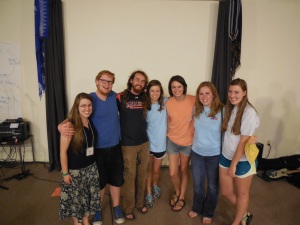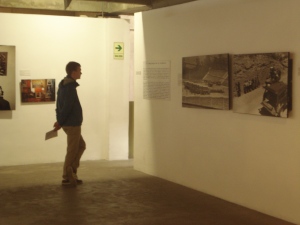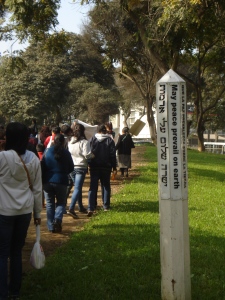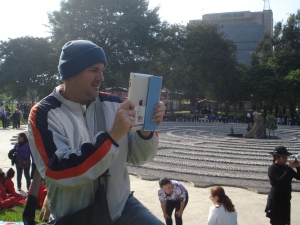Disclaimer: The thoughts expressed below are mine and mine alone (except for the quote by AJ, he said that).
On Thursday, we learned about the twenty years of violence in Ayacucho. For those who do not know, almost 70,000 Peruvians were killed between 1980 and 2000 as the result of actions by the fundamentalist leftist groups Partido Comunista de Peru Sendero Luminoso (the Shining Path) and the Movimiento Revolucionista Tupac Amaru, and equally violent responses from the Peruvian government.
All sides of the conflict used senseless violence to meet their goals.The founder of Sendero Lumniso, Abimael Guzman, openly stated that the deaths of thousands were worth the new regime. Likewise, the Peruvian President Alberto Fujimori Fujimori sanctioned a “dirty war” involving the killing of entire groups when just one was identified as a possible terrorist. As members of Sendero Luminoso hid among indigenous communities this resulted in two Quechua speakers dying for every three deaths. We learned a great deal about the motivations and ideology of each group, but I will not attempt to act as an authority on the specifics of the conflict.
Honestly, no one knows exactly what happened throughout the conflict. As a result, the government initiated a Commission for Truth and Reconciliation (CTR) in 2003 to uncover the facts and provide reparations for the families of disappeared persons and those who died. We visited a CTR photo exhibit with images and information about different major tragedies during the 20 years. Most information contained the same phrase: “still under mysterious circumstances.” The years of violence were highly unstable, so I am not surprised that so many stories were lost.
I’m more interested in a reflection offered by fellow YAV, AJ Newcombe. As he put it, “There is a power in being a witness to this [tragedy].” There is power in knowing what happened, why it happened, and what tragedies like this look like early on.
Movements like the CTR helps shed light on the seeds of violence, so that we can make sure they are not spread in the future. Likewise, this exhibit reminded me of the price of fundamentalism and allowing the ends to justify the means. These are bad motives, but it is easy to grow passive in a comfortable life, in which I avoid tragedy.
There is also a power in identifying abuses of power. This power goes beyond observing an exhibit, but is something you can do in your daily life.This is the only way we can honor those lost to the tragedy and identify those responsible. We cannot offer anything close to final judgment or true justice, but we can ensure that the perpetrators can never act similarly in the future.
That requires documentation, a form of power that each of us can take on in the present day. I was moved by the photos throughout the exhibit and shocked that they even existed. One set of photos showed the last shots taken by a journalist before he and his group were killed by the members of indigenous town, under mysterious circumstances. Another series showed two students taken away by the police before they were identified as dead in prison the next day.
To me, this exhibit offered a message for the present day beyond the seeds of senseless violence. That message was: document uses and abuses of power. Even now in the United States, there are constant examples of police brutality of people of color. Videos have captured many of these instances, but there are many more that likely go undocumented. The power of being a witness is an active one, not just a passive one.
I hesitate to make a stance like this. It offers a direct suggestion: “Document the police or those in power.” I am usually not 100 percent in favor of any seemingly radical measure, yet I think this is not such a radical notion. Yet in Rialto, CA use of force by police dropped 60 percent and citizen complaints dropped 88 percent in the first-year after police started wearing cameras. That’s just correlation, but it is a notable one all the same. Documentation seems to be a win-win, so documentation may not be such a radical notion after all.
I’m trying not to forget the importance of being a witness to tragedy and violence. It helps me interpret exhibits like the CTR and motivates me to push for transparent uses of power. The Commission for Truth and Reconciliation is an inspiring and powerful response to the years of violence in Peru and chooses to recognize instead of deny the arguably darkest part of this country’s history.








